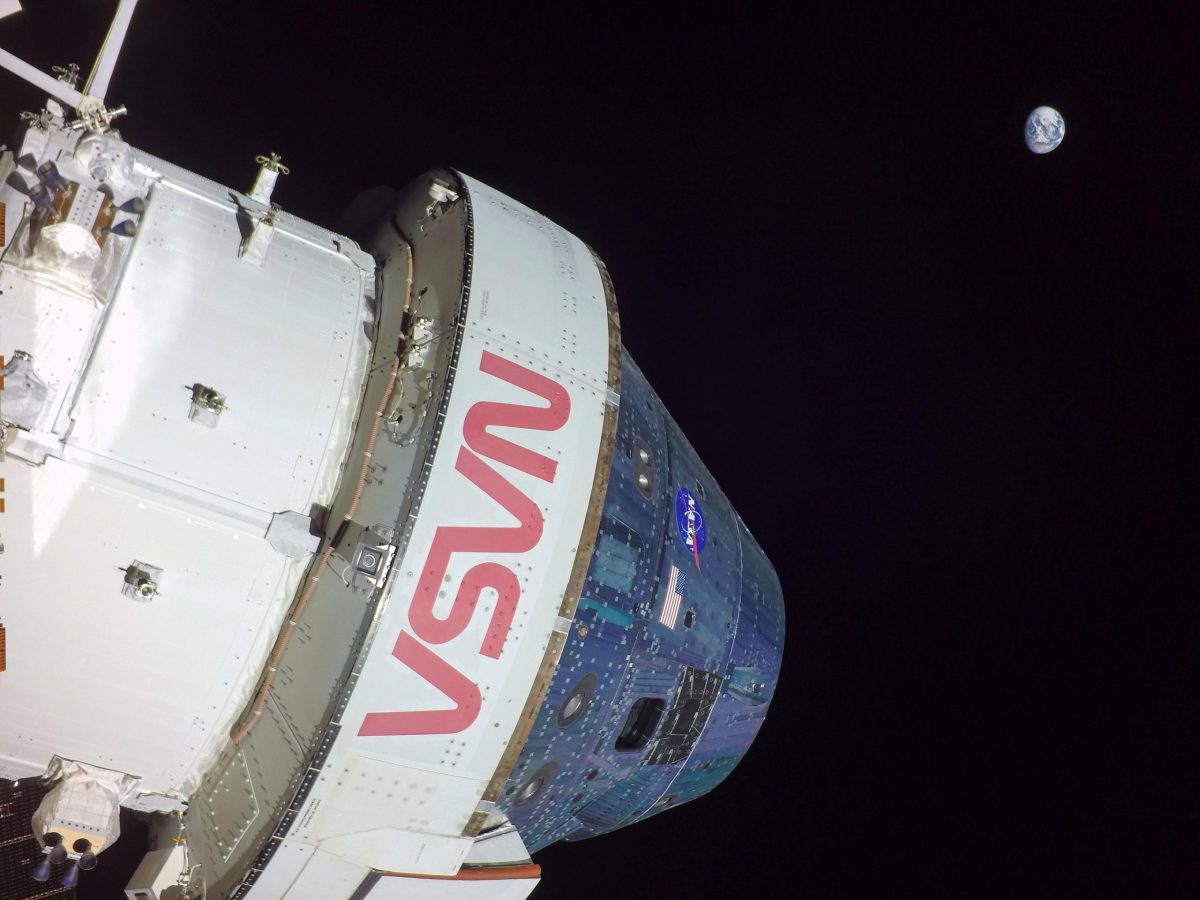On flight day 11, NASA’S Orion spacecraft captured imagery looking back at the Earth from a camera mounted on one of its solar arrays. The spacecraft is currently in a distant retrograde orbit around the Moon. Credit: NASA
On day 11 of the Artemis I mission, Orion continues its journey beyond the Moon after entering a distant retrograde orbit on Friday, November 25, at 3:52 p.m. CST. Orion will remain in this orbit for six days before exiting lunar orbit to put the spacecraft on a trajectory back to Earth for a Sunday, December 11, splashdown in the Pacific Ocean.
At 7:42 a.m. on Saturday, November 26, Orion surpassed the distance record for a mission with a spacecraft designed to carry humans to deep space and back to Earth. The record was set during the Apollo 13 mission at 248,655 miles (400,171 km) from our home planet. At its maximum distance from the Moon, Orion will be more than 270,000 miles (435,000 km) from Earth Monday, November 28.
Engineers also completed the first orbital maintenance burn by firing auxiliary thrusters on Orion’s service module at 3:52 p.m. for less than a second to propel the spacecraft at .47 feet per second. The planned orbital maintenance burns will fine-tune Orion’s trajectory as it continues its orbit around the Moon.

This high-resolution image captures the inside of the Orion crew module on flight day one of the Artemis I mission. At left is Commander Moonikin Campos, a purposeful passenger equipped with sensors to collect data that will help scientists and engineers understand the deep-space environment for future Artemis missions. At the center is the Callisto payload, a technology demonstration of voice-activated audio and video technology from Lockheed Martin in collaboration with Amazon and Cisco. Callisto could assist future astronauts on deep-space missions. Below and to the right of Callisto is the Artemis I zero-gravity indicator, astronaut Snoopy. Credit: NASA
Flying aboard Orion on the Artemis I mission is a suited manikin named after a key player in bringing Apollo 13 safely back to Earth. Arturo Campos was an electrical engineer who developed a plan to provide the command module with enough electrical power to navigate home safely after an oxygen tank aboard the service module of the Apollo spacecraft ruptured. Commander Moonikin Campos is outfitted with sensors to provide data on what crew members may experience in flight, continuing Campos’ legacy of enabling human exploration in deep space.
Artemis builds on the experience of Apollo. With Artemis, humans will return to the lunar surface, and this time to stay. NASA will use innovative technologies to explore the Moon’s South Pole and more of the lunar surface than ever before using the Gateway space station in lunar orbit along with advanced spacesuits and rovers. NASA will lead the way in collaboration with international and commercial partners to establish the first long-term presence on the Moon. Then, we will use what we learn on and around the Moon to take the next giant leap: sending the first astronauts to Mars.
On Saturday, November 26, at 8:42 a.m. EST (13:42 UTC) the Orion spacecraft broke the record for the farthest distance traveled by a spacecraft designed to carry humans to deep space and safely return them to Earth. This distance is currently held by the Apollo 13 spacecraft. In this video, Apollo astronauts and flight directors give their insights into the Apollo program, the nation’s reaction then, and how the Artemis program will benefit the nation today. As we go back to the Moon, Artemis will prepare us to travel even deeper into space. Credit: NASA
As of 1:16 p.m. on November 26, Orion was 252,133 miles (405,769 km) from Earth and 52,707 miles (85,824 km) from the Moon, cruising at 2,013 miles (3,240 km) per hour. You can track Orion via the Artemis Real-Time Orbit Website, or AROW.
Learn more about how Apollo builds on Artemis and how Orion is designed for human missions to deep space.
Share your story or advertise with us: Whatsapp: +2347068606071 Email: info@newspotng.com















